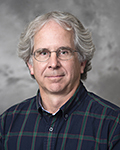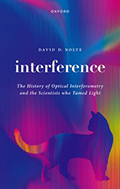Quantum Information Science--The 2022 Nobel Prize Backstory
Category
Published on
Abstract
John Clauser of the USA, Alain Aspect of France and Anton Zeilinger of Austria won the 2022 Nobel Prize in Physics for their work on the foundations of quantum information science.
Clauser had an odd start as a physics graduate student at Columbia University in the late 1960’s, working (against his advisor’s advice) on the topic of quantum nonlocality. The work was unfunded and had ended the careers of many physicists before him*. A decade later, Alain Aspect performed virtuoso experiments that eclipsed everything Clauser had achieved as Clauser felt sidelined, and his chances for a Nobel dimmed. A decade after that, Anton Zeilinger was extending the work of Aspect to a three-quantum state, known as GHZ, when he realized that his experimental set-up had all the features needed to perform a newly-proposed quantum teleportation protocol. In a quick pivot, his lab teleported a few qubits, but got ensnared in a priority dispute that threatened his eventual Nobel prize.
This lecture gives the backstory to the 2022 Nobel Prize in Physics. It presents a cast of characters starting with Einstein distrusting his own invention, David Bohm, a rare physicist exiled by the US government, and John Bell of CERN, who began his high-school education on a financial needs scholarship to a vocational school that included a class in brick laying. The story features Madame Wu of Columbia, who was a high-energy experimental physicist, Charles Townes of Berkeley, who had the foresight to support Clauser at a critical moment, and Abner Shimony of Boston University. The tale then shifts to Giles Brassard of Montreal and Charles Bennet of IBM, two computer scientists who met literally floating in the waters of the Caribbean. By the time they swam to shore, they had invented the first of a series of quantum communication protocols that launched the quantum teleportation competition of Zeilinger against the team of Sandu Popescu of Cambridge and Francesco de Martini of Rome.
Bio
 David D. Nolte, the Edward M. Purcell Distinguished Professor of Physics and Astronomy at Purdue University, is an internationally recognized researcher in holography and interferometry. He received his baccalaureate from Cornell University in 1981 and his PhD from the University of California at Berkeley in 1988. He is the author of over 200 journal papers, has written 14 book chapters or encyclopedia articles, has secured 24 US patents in interferometric optics and biophotonics, and is a technical founder of two start-up companies based on biological applications of interferometric detectors.
David D. Nolte, the Edward M. Purcell Distinguished Professor of Physics and Astronomy at Purdue University, is an internationally recognized researcher in holography and interferometry. He received his baccalaureate from Cornell University in 1981 and his PhD from the University of California at Berkeley in 1988. He is the author of over 200 journal papers, has written 14 book chapters or encyclopedia articles, has secured 24 US patents in interferometric optics and biophotonics, and is a technical founder of two start-up companies based on biological applications of interferometric detectors.
David has been elected a Fellow of the American Association for the Advancement of Science, a Fellow of the American Physical Society and a Fellow of the Optical Society of America. He was a Research Fellow of the Alfred P. Sloan Foundation, and a Presidential Young Investigator of the National Science Foundation. In 2005 he received the Herbert Newby McCoy Award from Purdue University.
David is the author of the advanced textbook Optical Interferometry for Biology and Medicine (Springer, 2011) that explains the physics of optical interferometers and helped establish him as a world leader in the science of interferometry. His trade nonfiction book Mind at Light Speed: A New Kind of Intelligence (Simon&Schuster: Free Press, 2001) is an account of the fiber optic telecommunication revolution. He is also the author of the general-interest book Galileo Unbound: A Path Across Life, the Universe and Everything (Oxford, 2018) on the history of dynamics. He published the undergraduate textbook Introduction to Modern Dynamics: Chaos, Networks, Space and Time 2nd edition (Oxford, 2019). He has been interviewed on public radio and TV, as well as by science magazines, on the topics of his scientific research.
Sponsored by
Publications
 Interference
Interference
The History of Optical Interferometry and the Scientists Who Tamed Light
David Nolte
Oxford University Press
ISBN: 9780192869760
Ever wonder why soap bubbles become invisible right before they pop? Or why lenses are so blue they look purple? How is it possible to image black holes at the heart of distant galaxies? The answer to all these questions is Interference. This book tells the story of the science of optical interferometry - mankind's most sensitive form of measurement - and of the scientists who tamed light to make outstanding discoveries, from lasers and holograms to astronomy and quantum physics.
Cite this work
Researchers should cite this work as follows:
Time
Location
112 Physics, Purdue University, West Lafayette, IN